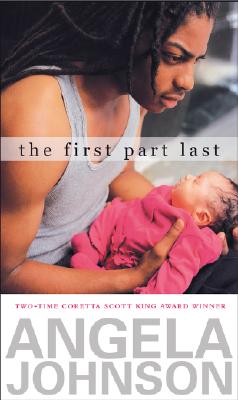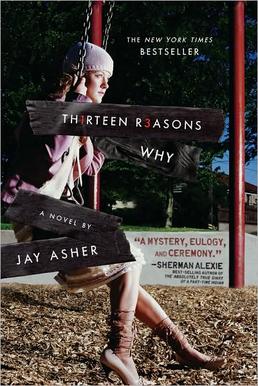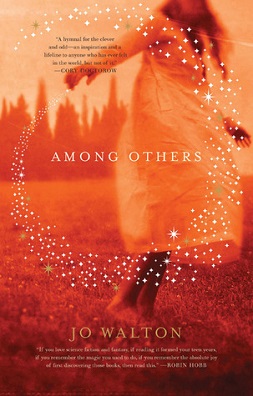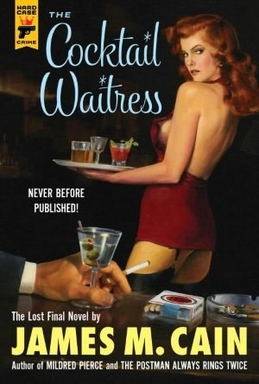
Ursula Kroeber Le Guin was an American author. She is best known for her works of speculative fiction, including science fiction works set in her Hainish universe, and the Earthsea fantasy series. Her work was first published in 1959, and her literary career spanned nearly sixty years, producing more than twenty novels and over a hundred short stories, in addition to poetry, literary criticism, translations, and children's books. Frequently described as an author of science fiction, Le Guin has also been called a "major voice in American Letters". Le Guin said she would prefer to be known as an "American novelist".

The Door into Summer is a science fiction novel by American science fiction writer Robert A. Heinlein, originally serialized in The Magazine of Fantasy & Science Fiction. It was published in hardcover in 1957.

If on a winter's night a traveler is a 1979 novel by the Italian writer Italo Calvino. The postmodernist narrative, in the form of a frame story, is about the reader trying to read a book called If on a winter's night a traveler. Each chapter is divided into two sections. The first section of each chapter is in second person, and describes the process the reader goes through to attempt to read the next chapter of the book they are reading. The second half is the first part of a new book that the reader ("you") finds. The second half is always about something different from the previous ones. The book was published in an English translation by William Weaver in 1981.

A first-person narrative is a mode of storytelling in which a storyteller recounts events from that storyteller's own personal point of view, using first-person grammar such as "I", "me", "my", and "myself". It must be narrated by a first-person character, such as a protagonist, re-teller, witness, or peripheral character. Alternatively, in a visual storytelling medium, the first-person perspective is a graphical perspective rendered through a character's visual field, so the camera is "seeing" out of a character's eyes.
Hyperbole is the use of exaggeration as a rhetorical device or figure of speech. In rhetoric, it is also sometimes known as auxesis. In poetry and oratory, it emphasizes, evokes strong feelings, and creates strong impressions. As a figure of speech, it is usually not meant to be taken literally.

Middlesex is a Pulitzer Prize–winning novel by Jeffrey Eugenides published in 2002. The book is a bestseller, with more than four million copies sold since its publication. Its characters and events are loosely based on aspects of Eugenides' life and observations of his Greek heritage. It is not an autobiography; unlike the protagonist, Eugenides is not intersex. The author decided to write Middlesex after reading the 1980 memoir Herculine Barbin and finding himself dissatisfied with its discussion of intersex anatomy and emotions.

A Wild Sheep Chase is the third novel by Japanese author Haruki Murakami. First published in Japan in 1982, it was translated into English in 1989. It is an independent sequel to Pinball, 1973, and the third book in the so-called "Trilogy of the Rat". It won the 1982 Noma Literary Newcomer's Prize.
Lisa Alther is an American author and novelist.

The First Part Last is a young adult novel by Angela Johnson that deals with the subject of teen pregnancy. It's the second book in the Heaven Trilogy. Johnson writes the story in first person narration from the perspective of Bobby, the 16-year-old father, setting it apart from most books on the subject. The book is divided into four parts and its chapters alternate between "then" and "now."
The non-fiction novel is a literary genre that, broadly speaking, depicts non-fictional elements, such as real historical figures and actual events, woven together with fictitious conversations and uses the storytelling techniques of fiction. The non-fiction novel is an otherwise loosely defined and flexible genre. The genre is sometimes referred to using the slang term "faction", a portmanteau of the words fact and fiction.

Dear Mr. Henshaw is a juvenile epistolary novel by Beverly Cleary and illustrator Paul O. Zelinsky that was awarded the Newbery Medal in 1984. Based on a 2007 online poll, the National Education Association listed the book as one of its "Teachers' Top 100 Books for Children".

The Tunnel is a 1995 novel by the American author William H. Gass. The novel took 26 years to write and earned him the American Book Award of 1996, and was also a finalist for the PEN/Faulkner award.

The Left Hand of Darkness is a science fiction novel by the American writer Ursula K. Le Guin. Published in 1969, it became immensely popular, and established Le Guin's status as a major author of science fiction. The novel is set in the fictional Hainish universe as part of the Hainish Cycle, a series of novels and short stories by Le Guin, which she introduced in the 1964 short story "The Dowry of Angyar". It was fourth in sequence of writing among the Hainish novels, preceded by City of Illusions, and followed by The Word for World Is Forest.

Thirteen Reasons Why is a young adult novel written by Jay Asher in 2007, which follows the story of Hannah Baker, a high school sophomore, and the thirteen reasons why she has died by suicide. Following her death, Hannah leaves behind a series of seven double-sided cassette tapes detailing the thirteen specific people and events that she blames for her demise. Two weeks after her death, these cassette tapes are mailed out with directions to pass the tapes on to the next person on the tape. Hannah's life story is conveyed through these tapes, which are narrated by Hannah herself, and through the point of view of Clay, her classmate and the ninth person to receive the tapes. The inspiration behind the main character, Hannah Baker, comes from author Jay Asher's close relative who attempted suicide.

Among Others is a 2011 fantasy novel written by Welsh-Canadian writer Jo Walton, published originally by Tor Books. It is published in the UK by Corsair. It won the 2012 Nebula Award for Best Novel, the Hugo Award for Best Novel and the British Fantasy Award, and was a nominee for the World Fantasy Award for Best Novel.

Ginny Field is a fictional character in the Friday the 13th series. She first appears in Friday the 13th Part 2 (1981) as a child psychology student working as a camp counselor assistant trainer, in which she was portrayed by Amy Steel. Writer Ron Kurtz conceptualized the character, while director Steve Miner intended to utilize Ginny to carry further installments as the main protagonist. Ginny has subsequently seen representation in other media such as novels and fan labor.

Convenience Store Woman is a 2016 novel by Japanese author Sayaka Murata. It captures the atmosphere of the familiar convenience store that is so much part of life in Japan. The novel won the Akutagawa Prize in 2016. Aside from writing, Murata worked at a convenience store three times a week and drew the inspiration for the novel from her experiences. It was first published in the June 2016 issue of Bungakukai and later as a book in July 2016 by Bungeishunjū.

A Summary History of New-England is an 18th-century history book regarding New England by the American author, Hannah Adams. It was first published in Dedham, Massachusetts in 1799, by Herman Mann and James H. Adams, and followed her A View of Religions, which was published in 1784. Not arrogating to herself the honors of an original historian, Adams exonerated herself from a large share of responsibility, and at the same time earned considerable merit by the judicious use which she has made of the labor of others. She included or abridged their accounts, as occasion demanded.

We Were Witches is a 2017 novel by Ariel Gore. It is a first-person narrative of a fictionalized version of the author, of her life as a teen mom and budding feminist, from the birth of her daughter when she was 18 years old, to her graduation from Mills College.

The Cocktail Waitress is a novel by James M. Cain published posthumously in 2012 by Hard Case Crime press.

















